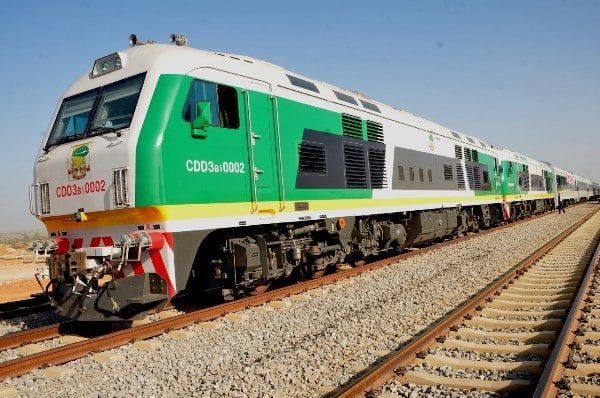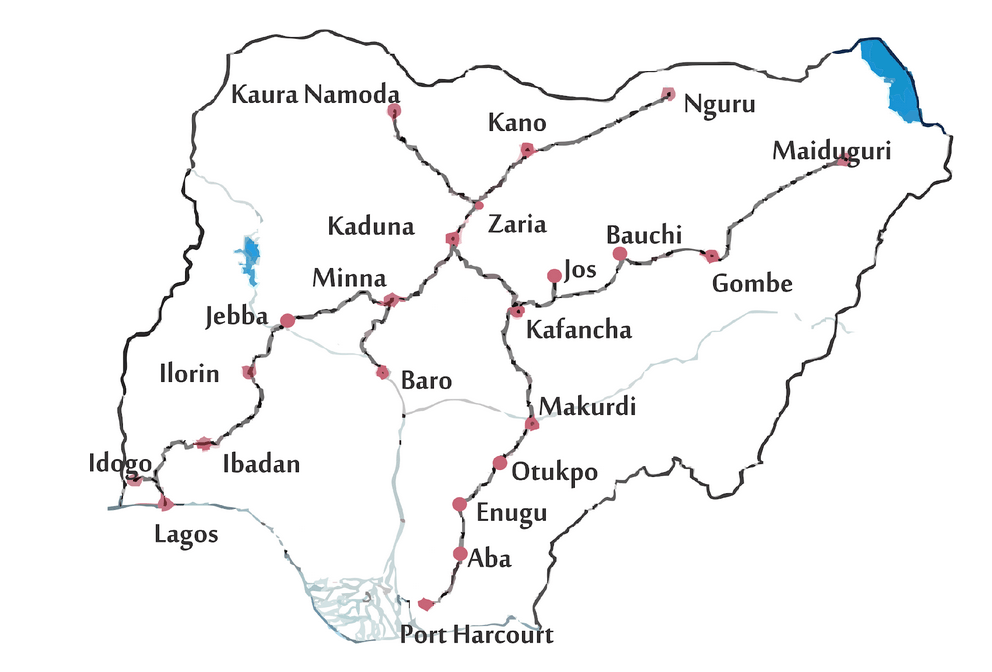
This is one of the oldest forms of organized transportation. With the invention of the steam engine, in the early nineteenth century, the introduction of rail transport started. Locomotives and coaches which run on two metal rails make up the railway transportation.
The rail gauge width determines the space of trains and the number of goods they can carry. Gauges are of three types: The narrow gauge (107cm in width) and standard gauge (143cm in width) and broad gauge (160cm in width). The fastest railways operate on standard gauge and are constructed on low-lying terrain; Narrow gauge is constructed usually in hilly areas. Nigeria uses a narrow gauge while standard gauges are found in Europe, North America and China.
Brief History of Rail Transport in Nigeria:
Railway transport in Nigeria started earlier than that of roads. The Lagos-Ibadan line was the first to be built, (1896-98). Nigeria railway corporation manages the entire railway system except for the Itakpe-Ajaokuta railway system. The administration is of two branches;
1. The eastern branch is for Port-Harcourt to Maiduguri.
2. The western branch for Lagos to Nguru and the offshoot to Kaura Namoda.
The itakpe-ajaokuta line is referred to as a mineral line linking the Ajaokuta Steel Company Limited (ASCL) and the Nigerian Iron Ore Mining Company (NIOMCO), in Itakpe with the sea. The railways are of narrow gauge (1067mm) and single track. They cover a total distance of 3600km.
Rail Pattern:
It can be grouped into three main patterns and they are as follows,
1. Lines of Perpetration:
They are isolated lines which run frequently inland from a coastal port to areas of importance like areas of agricultural produce and mineral resources. A good example can be seen in Nigeria with the Port-Harcourt to Jos line and Lagos to Zaria line.
2. Local Network:
The railway lines are integrated and often connected to high-density industrial regions or towns in densely populated regions. Ruhr (German) industrial region has a heavy railway network within. The area of London with a high population has a similar network.
3. Trans-Continental:
These are lines constructed for economic and political reasons through long distances, joining two or more countries. Such long-distance rail lines include the trans-Liberian railway (9000km), the Canadian pacific railway (4800km) and the Tanzania railway (1800km) which links Tanzania and Zambia, a regional railway in east Africa.
Advantages of Rail Transport:
1. Large consignments of bulky commodities are conveyed by rail transport because it is quite suited for it.
2. It helps a lot to carry goods over long distances compared to road and air transport.
3. Large volume of consignments can be carried in a single trip by rail transport.
4. Speed or express trains can be used for long-distance journeys between termini.
Disadvantages of Rail Transport:
1. This system of transport is not as flexible as road or air transport because its tracks are fixed. Trains stop at designated stations.
2. Rail transport depends heavily on road transport. The goods carried by trains are trans-shipped along feeder roads that connect with the station. Areas not connected with feeder roads find it difficult to use railway transport.
3. There is heavy capital involved in maintaining and operating the railway, particularly, in less developed countries.
4. Air transport is comparatively faster than railway transport. For this reason, it is not suitable for transporting perishable goods like fruits, vegetables, tomatoes, etc. if the train is not refrigerated.
Uses of Rail Transportation:
The trains are used to convey oil, coal, passenger, goods and cattle including other livestock.
Primarily, the railways were built to;
1. Convey existing minerals like the extension to Jos and Enugu;
2. Open up potentially good export crop lands example; Maiduguri, Kano, and Kaura Namoda extensions.
3. Transport their commodities to the ports and help in distributing imported goods inland. In fact, these days the railways also serve to:
a. Promote industries.
b. Promote north-south regional trade.
c. Link cities.
d. Transport people, and goods.
The Nigeria railway system is facing great challenges of worn-out tracks, old broken down coaches and locomotives, expensive operation management, inadequacies giving rise to not being able to pay salaries and pension and competition from road transport which is faster and more practical.
Take a close study of the map of Nigeria showing the railway lines.

The Nigeria railway system maintains a south-north orientation.
Attempt to Answer the Following Questions Below:
1. Why are the railways of east-north and west north orientation?
2. Why are the railways important to Nigeria?
3. Name three important railway junctions and five termini in the diagram.
4. See if you can draw a sketch map of Nigeria showing the railway lines and their termini.
5. Name the minerals and crops that are transported by the railway system in the country.



Responses